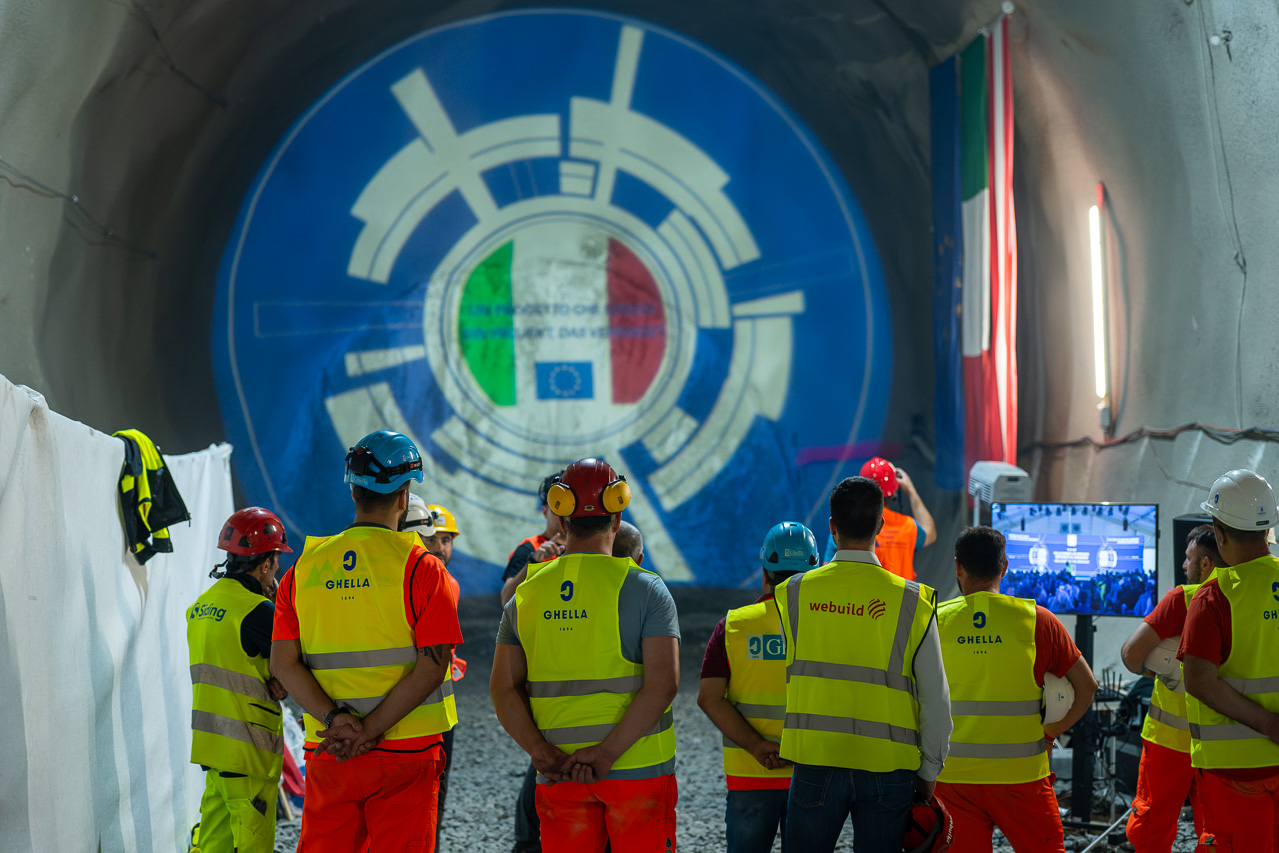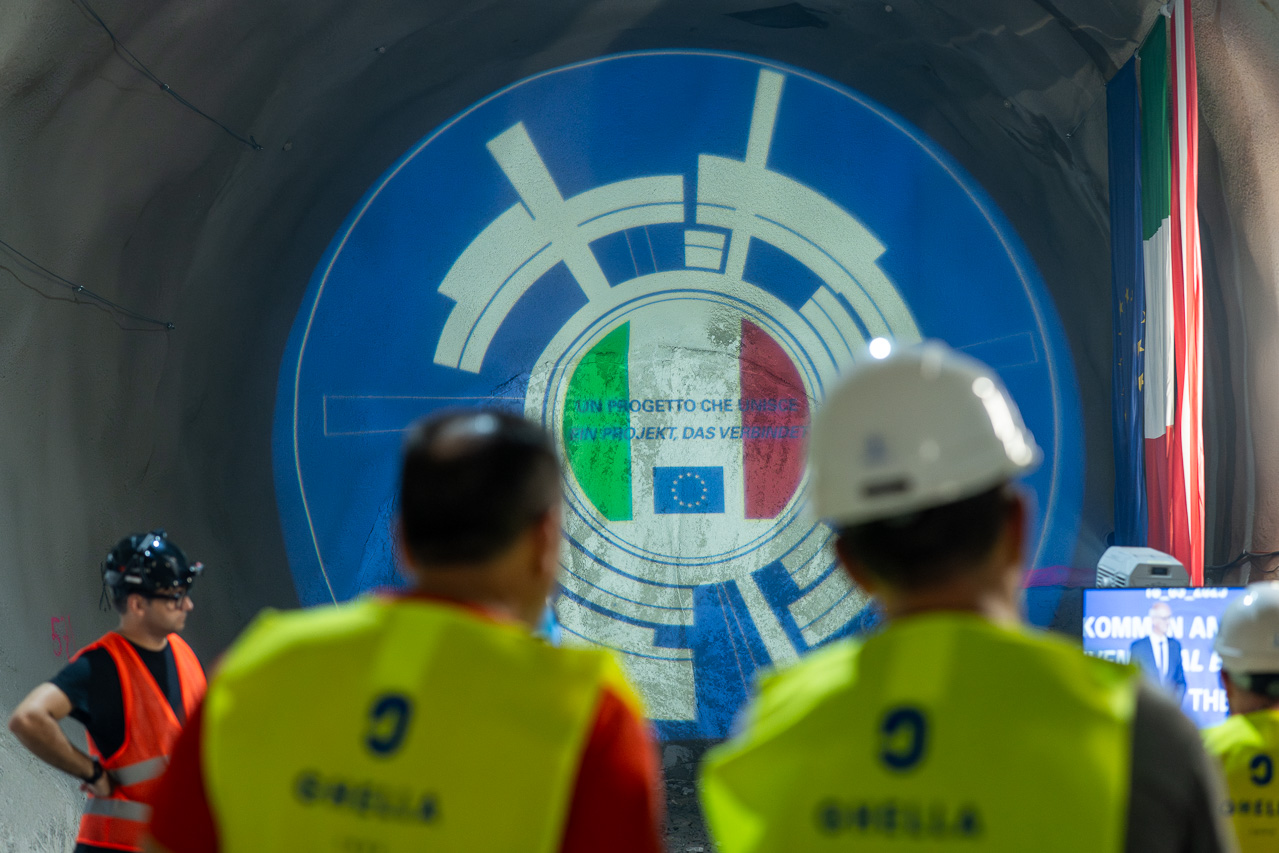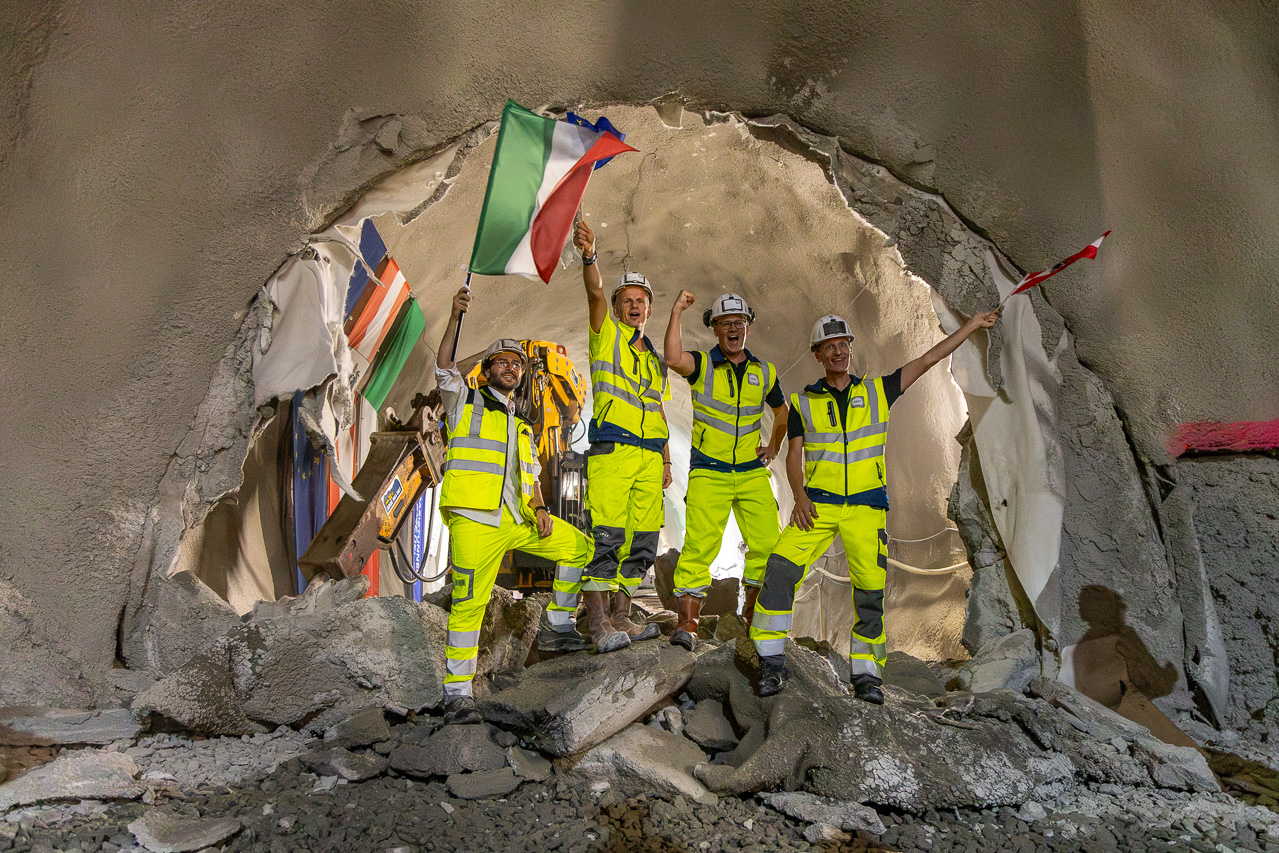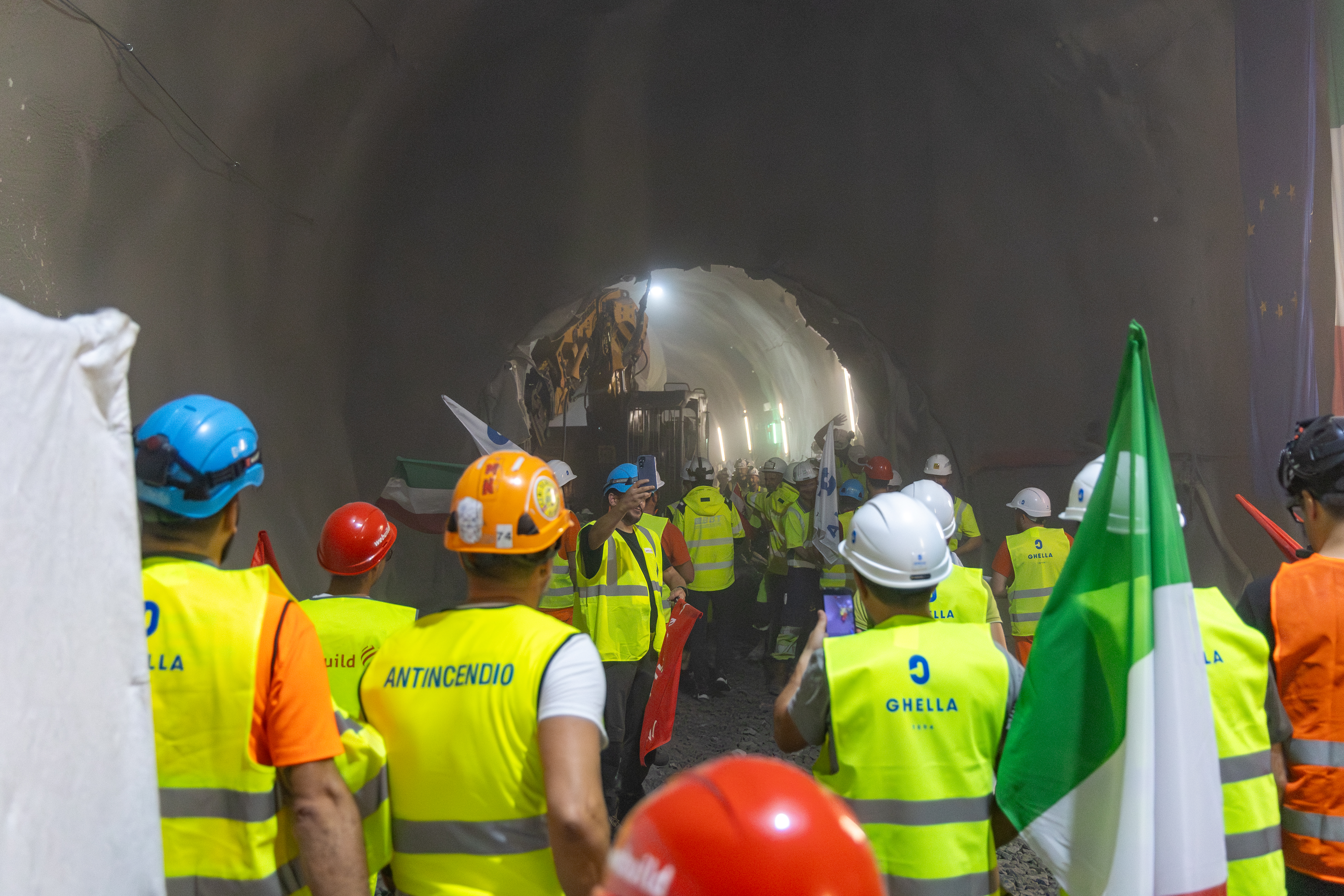Historic Breakthrough in the Brenner Base Tunnel: A Milestone for Austria, Italy, and Europe
09-18-2025
First underground cross-border connection in the Brenner Base Tunnel project. European Commission representatives and high-ranking officials from Italy and Austria attended the ceremony.
Bolzano/Innsbruck – 18 September 2025: Today marks a historic moment with the breakthrough in the exploratory tunnel of the Brenner Base Tunnel. Austria and Italy, together with the European Union, celebrate a significant step forward in one of Europe’s most important railway infrastructure projects and the construction of the world's longest railway connection. On the Italian side, last May, TBM Flavia completed excavation of the tunnel up to the border with Austria under the Alps, ending an over 14-kilometre journey.
“We are proud to be part of this pivotal moment in the realization of the Brenner Base Tunnel - one of Europe’s most strategic infrastructures and destined to become the world’s longest railway tunnel.” - said Enrico Ghella, President and CEO of Ghella – “Ghella has proudly been part of this ambitious project since 2016. The milestone we celebrate today is the result of the expertise, determination, and dedication of everyone who has contributed day after day.
We believe the future is built underground: every meter we excavate is an act of responsibility toward the landscape around us and the generations to come.”
Ghella is constructing the H61 Mules 2-3 section—the largest segment of the entire project, extending from the northern boundary of the Italian "Isarco Underpass" lot to the Italian-Austrian border. The scope includes two main railway tunnels, the exploratory tunnel, several cross passages, and an emergency stop (one of only three along the entire route and the only one in Italian territory), along with its dedicated access tunnel.
Attending the ceremony were prominent dignitaries and around 1,000 guests, including the European Commissioner for Transport and Sustainable Tourism, Apostolos Tzitzikostas; DG Move Directors Herald Ruijters and Eric von Breska; Italy’s Deputy Prime Minister and Minister of Infrastructure and Transport Matteo Salvini; Austrian Federal Chancellor Christian Stocker; Austria’s Transport Minister Peter Hanke; the Governors of Tyrol and the Autonomous Province of Bolzano, Anton Mattle and Arno Kompatscher; CEO of ÖBB-Infrastruktur AG Judith Engel; CEO of Rete Ferroviaria Italiana Aldo Isi; Transport Councillors Renè Zumtobel (Tyrol) and Daniel Alfreider (South Tyrol); board members of the Italian and Austrian supervisory boards of BBT SE; and representatives of the construction companies from both countries.
This was a historic ceremony for Italy, Austria, and Europe.
The breakthrough at the national border beneath the Brenner Pass once again demonstrates the strong cooperation between Italy and Austria, united by a common goal: a more sustainable, modern, and future-oriented mobility network.
The diaphragm was broken through at a depth of approximately 1,400 meters beneath the Brenner Pass—one of the most thrilling moments in tunnel construction. Commissioner Tzitzikostas, Prime Minister Meloni, Chancellor Stocker, and the two transport ministers jointly pressed the button to initiate the final excavation.
The Exploratory Tunnel: A Unique Engineering Feature - Stretching 57.5 kilometers, the exploratory tunnel of the Brenner Base Tunnel is among the longest of its kind globally.
It will not be used for rail traffic, but instead serves geological investigations, internal logistics, maintenance, and as an emergency escape route.
Of note is the extraordinary precision of the excavation: the section toward the Brenner was dug from two sides—through the Wolf and Mules access tunnels. Over a length of 29.1 km, the maximum allowable deviation was just 20 centimeters. In the end, the actual deviation was only six centimeters.
This remarkable accuracy allowed the main tunnels to be built without requiring complex corrective alignments.
The concept of a separate exploratory tunnel, acting as a “precursor” to the Brenner Base Tunnel, is globally unique in both length and precision, highlighting the immense technological complexity of the project. Positioned centrally beneath the two main tunnels, the exploratory tunnel lies around 10–12 meters below them.





